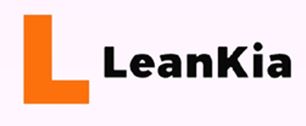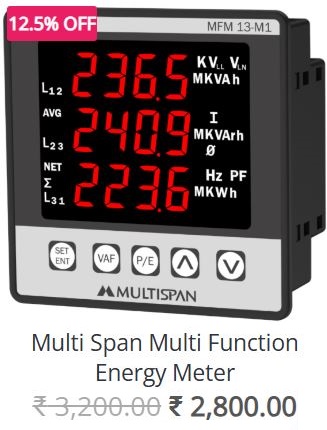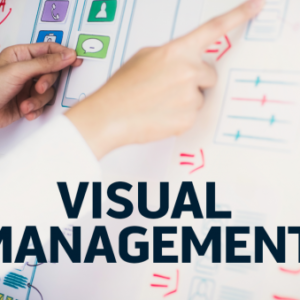In today’s competitive business environment, organizations are continuously seeking ways to improve efficiency, reduce waste, and ultimately, enhance their financial performance. One methodology that has proven to be highly effective in achieving these objectives is 5S. Originating from Japan as part of the Lean Manufacturing philosophy, 5S is a workplace organization method that can improve productivity, reduce costs, and lead to greater financial success. When implemented correctly, 5S can have a direct impact on your company’s bottom line by improving processes, enhancing safety, and facilitating better communication.
In this blog post, we’ll explore how the 5S system—comprised of Sort, Set in order, Shine, Standardize, and Sustain—can contribute to improved financial outcomes, with specific examples of how visual management, pressure gauges, and bins play a key role in the process.
What is 5S?
The 5S methodology involves five core principles that focus on maintaining an organized, efficient, and clean workplace. These principles are:
- Sort – Remove unnecessary items and keep only what is needed.
- Set in Order – Arrange tools, materials, and equipment so they are easy to access.
- Shine – Regularly clean the work area to maintain cleanliness and identify issues.
- Standardize – Establish standardized processes to maintain efficiency and consistency.
- Sustain – Continuously follow and improve the 5S practices.
While these principles are simple, their implementation can have significant benefits for any company, including better financial performance.
1. Visual Management: Enhancing Clarity and Reducing Wastes
Visual management refers to the use of visual signals—such as labels, color coding, charts, and displays—to communicate information quickly and clearly within the workplace. Under the 5S methodology, visual management helps to organize the workplace and makes it easier for employees to identify tools, materials, and tasks, thus improving efficiency.
For example, color-coded labels on equipment can help workers quickly identify tools or parts that belong in specific areas, reducing the time spent searching for them. Similarly, clear signage showing where items belong ensures that everything stays in its place, minimizing the risk of misplaced items or confusion during busy periods.
In terms of financial impact, visual management leads to:
- Reduced Downtime: When workers don’t have to spend time searching for tools or materials, they can focus on production, reducing downtime and increasing throughput.
- Fewer Errors: Clear visual signals reduce the likelihood of mistakes caused by miscommunication or confusion, which can lead to costly errors and rework.
- Better Decision Making: With real-time information displayed clearly in the workplace, managers can make informed decisions more quickly, optimizing resource allocation and minimizing waste.
2. Pressure Gauges: Ensuring Equipment Efficiency
In manufacturing environments or industrial settings, pressure gauges are crucial for monitoring the performance of equipment such as compressors, pumps, and hydraulic systems. Under the “Shine” and “Standardize” stages of 5S, maintaining equipment and using proper diagnostic tools—like pressure gauges—can prevent costly breakdowns and keep machinery running at peak efficiency.
By regularly monitoring the pressure levels of key systems, you can:
- Prevent Equipment Failures: Pressure gauges help identify potential issues early before they result in major equipment failure. This proactive approach reduces costly downtime and expensive repairs.
- Optimize Energy Use: If equipment is operating under inefficient pressure conditions, it may consume more energy. Maintaining optimal pressure ensures that equipment uses energy efficiently, leading to cost savings on energy bills.
- Increase Equipment Lifespan: Regular monitoring and maintenance can extend the lifespan of machines, which means less frequent capital investment in new equipment.
By integrating pressure gauges into your daily operations, you are investing in long-term cost savings and better financial performance through reduced maintenance costs and improved operational efficiency.
3. Bins: Streamlining Materials Management
Another important element in the 5S methodology is the use of bins to manage tools, materials, and parts. Under the “Set in Order” principle, bins are used to categorize and store items in a systematic way, making them easy to access and reducing waste. Whether you are using small bins for screws and fasteners or large bins for raw materials, having a clear, organized bin system ensures that the right parts are available when needed and that items are stored in an orderly fashion.
The benefits of using bins effectively include:
- Time Savings: When workers can quickly find the materials or tools they need, they spend less time searching for items and more time on productive work. This improves overall efficiency.
- Reduced Inventory Waste: By organizing materials in bins, you can better track inventory levels, reducing the likelihood of overstocking or understocking. This helps maintain a lean inventory, minimizing storage costs and reducing the capital tied up in excess materials.
- Improved Safety: An organized bin system reduces clutter, making the workplace safer for employees. This can result in fewer accidents and the associated costs, such as medical bills, lost productivity, and insurance claims.
How 5S Improves Financial Performance
When combined, the principles of 5S and the specific tools mentioned—visual management, pressure gauges, and bins—work together to streamline operations and boost financial outcomes. Here’s how:
- Increased Productivity: With clear, organized workspaces and tools, employees can perform tasks more efficiently, resulting in higher output without additional labor costs.
- Cost Reduction: The 5S methodology minimizes waste in the form of time, materials, and energy. By reducing excess inventory, preventing equipment breakdowns, and improving process flow, companies can save money in the long run.
- Improved Quality: A well-organized, clean, and standardized environment leads to fewer defects and better quality products. High-quality products reduce the costs associated with rework, returns, and customer dissatisfaction, ultimately improving profitability.
- Better Resource Management: By using tools like pressure gauges and bins effectively, companies can ensure that resources are being used optimally. This leads to cost savings in energy consumption, inventory management, and equipment maintenance.
Conclusion
Implementing the 5S methodology in your company can lead to significant improvements in both operational efficiency and financial performance. By leveraging visual management tools, pressure gauges, and organized bins, businesses can streamline processes, reduce waste, and enhance overall productivity. In the long term, these improvements translate into cost savings, higher quality, and a more sustainable competitive advantage, all of which directly impact the company’s financial health.
So, whether you’re in manufacturing, healthcare, or any other industry, the principles of 5S offer a proven approach to driving financial success through improved organization and efficiency. Embrace 5S, and watch your company’s bottom line soar.

















